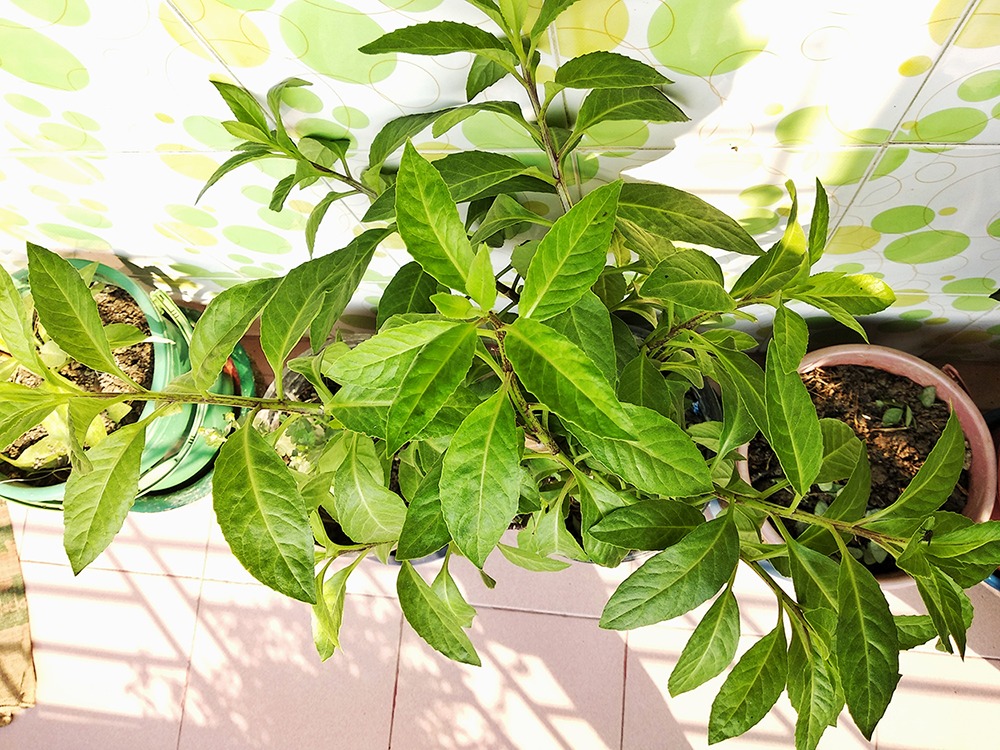Gynura procumbens, sometimes called "longevity spinach," is an edible vine found in China, Southeast Asia, and Africa.

The plant contains asparaginase, which is an enzyme that lowers acrylamides (cancer causing substances) in the body. It has a renowned reputation as a blood balancer.
Reports are that if diabetics eat 6-12 leaves a day they will no longer require insulin. Scientific studies on rats seem to support this. Longevity spinach is reputed to have other medicinal values like lowering cholesterol, lowering blood pressure and inhibiting cancer cells. The flavor is good and can be eaten raw, in smoothies, salads and stir fries. Young leaves are used for cooking, such as with meat and prawns in a vegetable soup. Also good in a tea. Longevity spinach grows well either in the shade or full sun, but semi-shade is preferred as it tends to grow better. It can be slowly adapted to grow in full sun, so long as the plant’s roots don’t dry out. In the spring, the plant rapidly regenerates from the root system. It grows as an annual vegetable or can be kept potted inside during the winter months. It only requires a slight amount of care and is easily harvested by pinching off the end leaves.
